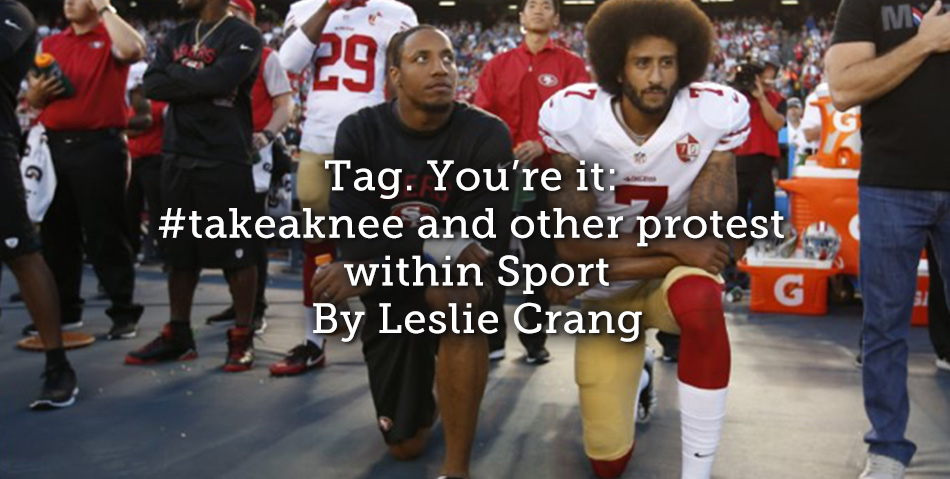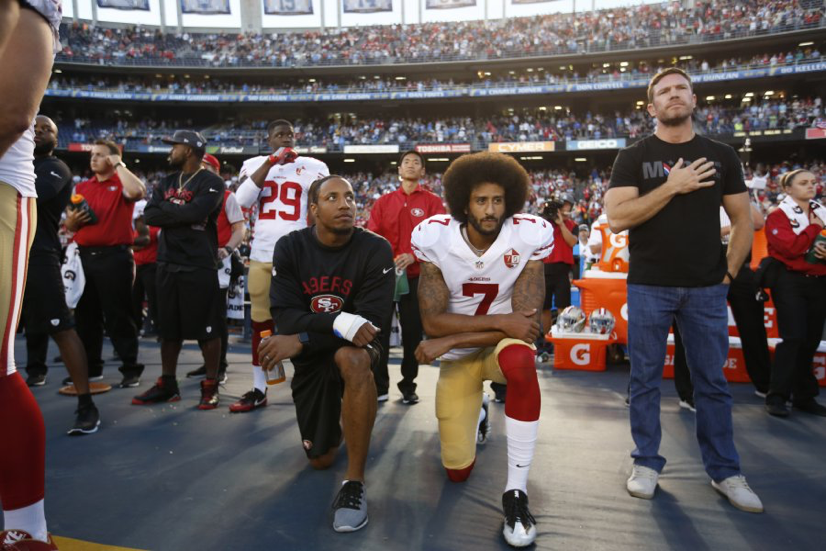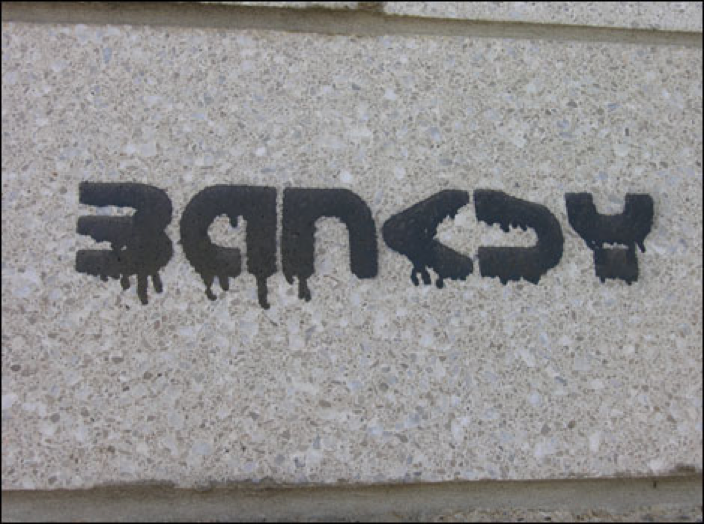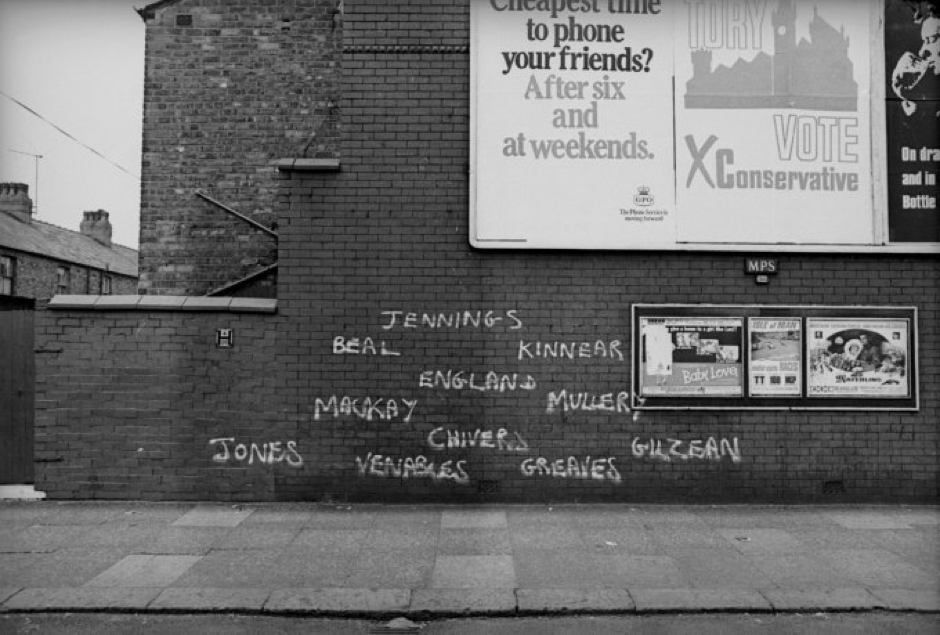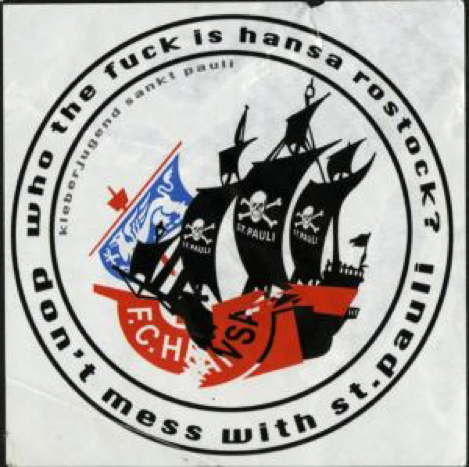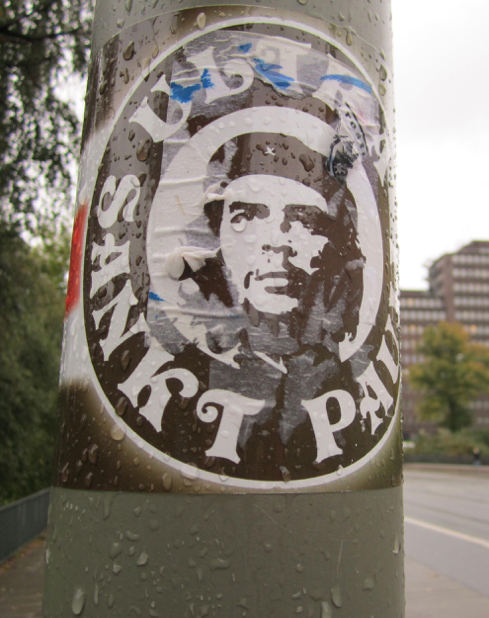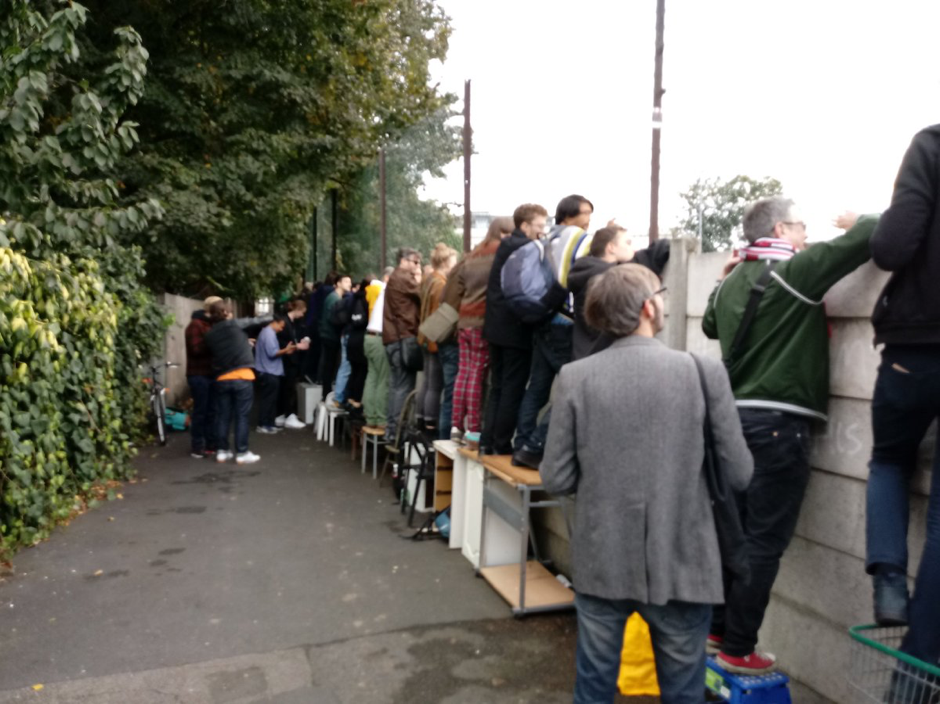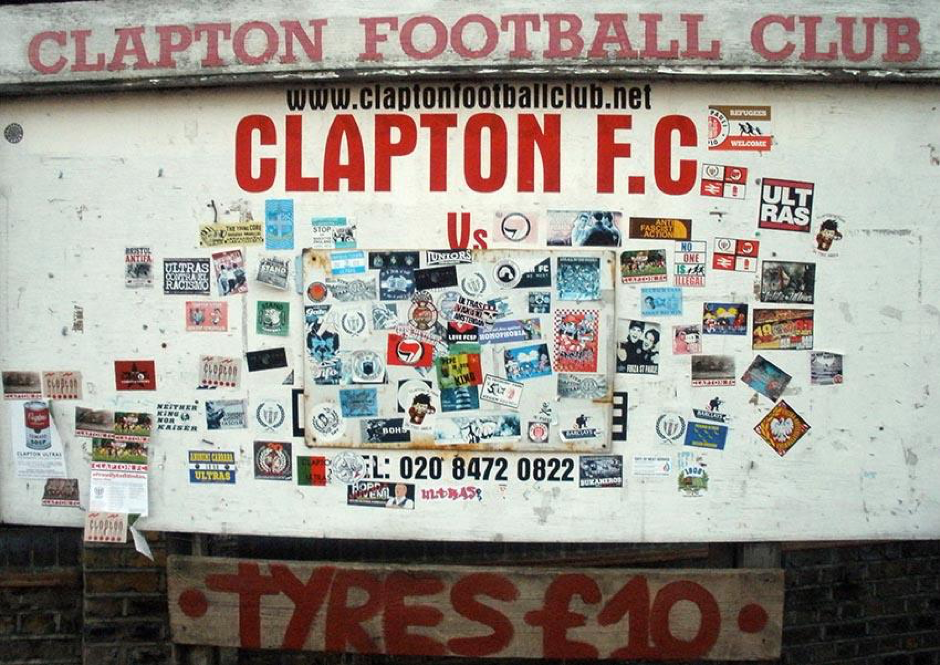- Colin Kaepernick San Francisco Quarterback, 2010-16. #takeaknee
When Colin Kaepernick refused to stand for the USA national anthem in a pre-season friendly in 2016, on being interviewed afterwards he said his reason was:-
I am not going to stand up to show pride in a flag for a country that oppresses black people and people of color. To me, this is bigger than football and it would be selfish on my part to look the other way. There are bodies in the street and people getting paid leave and getting away with murder. (Loggins, 2017)
Since then, a volatile political debate has taken part on twitter (surely, an anachronism?) between the President of the United States, Donald Trump and NFL players, who have taken, what is termed #takeaknee and not stood for the National Anthem. This, in social media parlance is termed a hashtag, predominantly used within the realms of twitter.
Vanessa Doctor (2012) describes a hashtag as :-
Simply a phrase or keyword that is preceded by a pound (#) symbol and used by the micro-blogging community to create a thread of conversations around a specific theme or topic.
Hashtag though also has other meanings. The pound symbol is the emblem of the hash, tagging though is a form of metadata, in that they represent a form of classification that people can use as a form of searching for items (Smith, 2007).
A tag has other meanings also. Tagging is also a form of graffiti, which is used as an identifier. For example, below is the ‘tag’ of Graffiti artist Banksy. Therefore a tag can be a primary identifier of the artist.
- Banksy
Within contemporary sport, the hashtag of #takeaknee is probably the most easy to identify with as a form of sport using a ‘tag’ as a form of social protest. But, in this brief essay, I would like to take a look at a more recent form of tagging, used as a form of political protest. Sticker art.
Although fans have used tagging previously, these have usually been used as markers of territory of a certain team and usually with spray paint. These are often open to being ‘edited’ by opposing fans to subvert the original meaning. Sometimes humorously and sometimes politically. Or to underline a position of power and subjugation to an opposing team/s. Or knowledge. See image below.
- Graffiti on a Manchester wall, consisting of a Spurs team line up circa 1967-68 #footballgraffiti (Footballgraffiti.tumblr.com, n.d.)
The use of sticker art has been a more recent use of tagging for fans, as with the cheapness of printing has meant that one can design a badge and print it off reasonably cheaply either by printing your own on a £30 printer from Amazon or send them away to be printed for 3p a sticker. Within certain clubs, the use of sticker art has been a way of underlining a political edge to their club, quite often of a socialist slant.
For example, the often idolised club of socialist value, St.Pauli of Hamburg has often used sticker art to underline its anti-racist and anti-homophobia viewpoint. For example, in the poster below, St.Pauli, identified both by the name and the visual image of the skull and crossbones (the unofficial emblem of the club) and a ship crashing into a club Hansa Rostock, who have been renowned for their racist fans. With the bootstrap around the image of ‘Who the fuck is Hansa Rostock? Don’t mess with St.Pauli.’ The message is clear, racism will not be allowed around St.Pauli fans.
- Hansa Rostock (Edition.cnn.com, 2006)
- Ultra Sankt Pauli
The second image, titled ‘Ultra Sankt Pauli’, is often used by St.Pauli (and other teams) is the image of the Argentinian revolutionary, Che Guevara. Around the side of the image is ‘Ultra Sankt Pauli’. The use of the image and title is important. For the use of the term ‘ultra’ it would have a certain significance of hooliganism, but as Podaliri and Balestri discuss (1998) :-
The term ‘hooligan’ comes from the name of a gang which was active in the late 1800s in England, famous because of its aggressiveness and this term equates these supporters directly as thugs. The term ‘ultra’, however is more all-embracing…..it comes from the world of politics (the supporters of the French Kings, or post-1968 left-wing groups).
The use of Che Guevara represent the political affiliation of the club. That of being revolutionary.
In many ways the use of the iconography of Che Guevara is what is termed ‘textual poaching’ by Henry Jenkins (1992), who describes them as:-
Fans are poachers who get to keep what they take and use their plundered goods as the foundations for the construction of an alternative cultural community.
In many ways, the use of stickers has made them a part of modern soccer. In looking at stickers and tags, one can’t but help but fall back on semiotics such as Ferdinand de Saussure work on the signifier and signified. So, with the stickers of St.Pauli, it is the image of the club is the signifier. It indicates ‘the club’.The signified of the sticker indicates the political affiliations and what the they represent within the community, both locally and within the footballing hierarchy.
Within the context of British sport, non-league football has often used stickers as a cheap way of advertising themselves and their cause and political standing. An example of this is Clapton Ultra’s who have obtained extensive press coverage.
But this season they have refused to attend home games at the Old Spotted Dog ground and have instead watched the via the alley alongside the ground. The reason for the non attendance can be seen in the link below the Clapton ultras stickers. In watching the game in the alley, the Ultras made the below sticker, underlining the pilfered images they have utilised to watch the game. It also emphasises that they are still fans but watching their team, anyway they can (see images below).
- Clapton Ultras and humour (Clapton Ultras, 2017)
- Attendance of Clapton Ultra’s fans
Although, clubs like Clapton and St.Pauli would see themselves as uniquely ‘against modern football’, (as many of their stickers actually say), David Webber (2015) in his article has indicated the dichotomy in this viewpoint when he wrote :-
Although far from coherent, the ‘Against Modern Football’ (AMF) movement comprises football supporters whose claims are mediated not purely by the clubs that they follow but by a complex relationship between their own set of self-interests and a broader concern for the future of the game.
In utilizing stickers., Clapton and St.Pauli can also something that is very much part of modern football. Brand awareness. Both clubs use of stickers provide them with what has been termed an ‘intangible asset’(Bridgewater, 2014). This asset has meant that they have quite literally become an advertising board [see below].
- Clapton F.C board, outside the club
In providing stickers, which have ‘advertised’ the club in many way, this has meant the club has had to underline this is about fandom and not a venue for fans to come for a stag do and act without the due respect the club and fans are afforded (Clapton Ultras, 2016).
In conclusion, tagging, whether online or on a sign post with a sticker have often helped to send out political messages to certain clubs and individuals. But they are open to being deciphered in a variety of ways. For example, the #takeaknee hashtag gets as much criticism on twitter as support in the comments section. St.Pauli and Clapton, in utilizing stickers are often seen as leaders in alternative football and had to contend with fans they had tried not to attract. Therefore, the medium is the message.
Article © Les Crang
References
- Bridgewater, S. (2014). Football brands. 1st ed. London: Palgrave Macmillan.
- Brown, A. (2001). Fanatics!. 1st ed. Abingdon: Routledge, p.PODALIRI, C. AND BALESTRI, C. Chapter 5 : The Ultras, racism and football culture in Italy.
- Clapton Ultras. (2016). This is Not a Stag Party Venue – Clapton Ultras. [online] Available at: http://www.claptonultras.org/2016/11/22/not-stag-party-venue/ [Accessed 28 Sep. 2017].
- Clapton Ultras. (2017). Support the team, not the regime – Clapton Ultras. [online] Available at: http://www.claptonultras.org/2017/08/10/support-the-team-not-the-regime/ [Accessed 28 Sep. 2017].
- Doctor, V. (2012). What Characters Can A Hashtag Include?. [online] Hashtag.org. Available at: https://www.hashtags.org/featured/what-characters-can-a-hashtag-include/ [Accessed 27 Sep. 2017].
- Edition.cnn.com. (2006). CNN.com – Hansa fined after Asamoah chants – Sep 15, 2006. [online] Available at: http://edition.cnn.com/2006/SPORT/football/09/15/germany.racism/ [Accessed 28 Sep. 2017].
- Footballgraffiti.tumblr.com. (n.d.). Football Graffiti : Photo. [online] Available at: http://footballgraffiti.tumblr.com/image/125351168718 [Accessed 28 Sep. 2017].
- Loggins, A. (2017). We can’t hear Colin Kaepernick anymore. He is being drowned out by noise | Ameer Hasan Loggins. [online] the Guardian. Available at: https://www.theguardian.com/commentisfree/2017/sep/27/colin-kaepernick-protest-nfl-take-a-knee [Accessed 27 Sep. 2017].
- Riach, J. (2015). Forza Clapton! The non-league club taking a stance against racism and homophobia. [online] the Guardian. Available at: https://www.theguardian.com/football/2015/sep/10/clapton-ultras-anti-fascist-essex-senior-league-football [Accessed 28 Sep. 2017].
- Smith, G. (2007). Tagging: People powered Metadata for the Social Web. 1st ed. San Francisco: New Rider.
- Webber, D. (2015). Playing on the break: Karl Polanyi and the double-movement ‘Against Modern Football. International Review for the Sociology of Sport.

